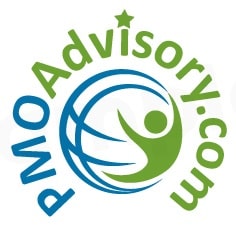Organizational Change Management OCM
Change is inevitable to improve and stay ahead of the competition but managing transformations is challenging as half of all change projects fail to deliver results. Most improvement initiatives fail because insufficient attention is given to organizational change management and active support during the changes. Management commitment, leadership and direct participation are important success factors for implementing change in an organization. This course is designed for those seeking to learn how to successfully implement change and transformation projects.
This training introduces the concepts of organizational change management and concisely describes the cost, the benefits and the duration of such a change project in an enterprise. Organizational change efforts stall when leadership forgets to focus on the impact change will have on employees. Managing the “people side” of change is often the most challenging and critical component of organizational transformation. Getting people engaged in the change will greatly enhance the likelihood of new structures and approaches being implemented successfully. We systematically approach the following three rules to successfully and sustainably implement changes.
1) Approach change in a sufficiently large context. Small changes might at first glance seem easier to implement, but they will not attract employees. Change needs a strong vision, which emotionally attracts people and encourages them to join the effort. Small changes do not appeal and will not convince people to put energy into it. They immediately feel that it is not thought through, and will not last. Embed change, technically and organizationally, in an increasingly corporate context. Design and communicate the change as a whole. Divide it into increments – as we practice in agile development.
2) Implement changes in short cycles. Improvements need to deliver concrete value within three to six months for practical use. Use appropriate techniques to deliver value, such as Scrum or Lean. Measure your development with performance indicators, such as cycle time, rework, or budget and time deviations, and evaluate where you need to improve. Target with a specific change a concrete improvement result. Connect pilots and roll-out to your overall product plans so that improvements will be tangible in daily life.
3) Professionally manage change. Change requires strong leadership and intensive change management in order to attract people and sustainably change the culture. Use the experiences and the impact of a partner, as a constant reminder and change advocate. His core competence is to streamline processes and deliver lasting change, whereas the core competence of our company is developing and producing of electronic systems. Often change projects are handled in parallel to the entire daily load, and soon people feel overwhelmed on all ranks. Entrust operational expertise for change to an external partner who has the experience and who is committed to deliver.
This training will be tailored to your enterprise and your needs. We will focus on those things, which are necessary for the participants, while ensuring a solid and systematic approach with state of the practice change methodology.
Learning Objectives
- Gain clarity on your own and your coworkers’ reaction to change
- Appreciate why others may react negatively to change and discover how best to respond
- Adapt your communication style to gain buy-in and support from others toward change initiatives
- Increase readiness to embrace change and overcome resistance in yourself and others
- Begin establishing your reputation as someone who can manage change and demonstrate agility and resilience
- Influence others to follow your lead through any change initiative
Who Should Attend
This training will benefit professionals and executives in engineering, product managers, marketing and sales personnel, program managers, project managers, buyers, system and software engineers, analysts, consultants, quality managers from companies of all industries and sizes.
